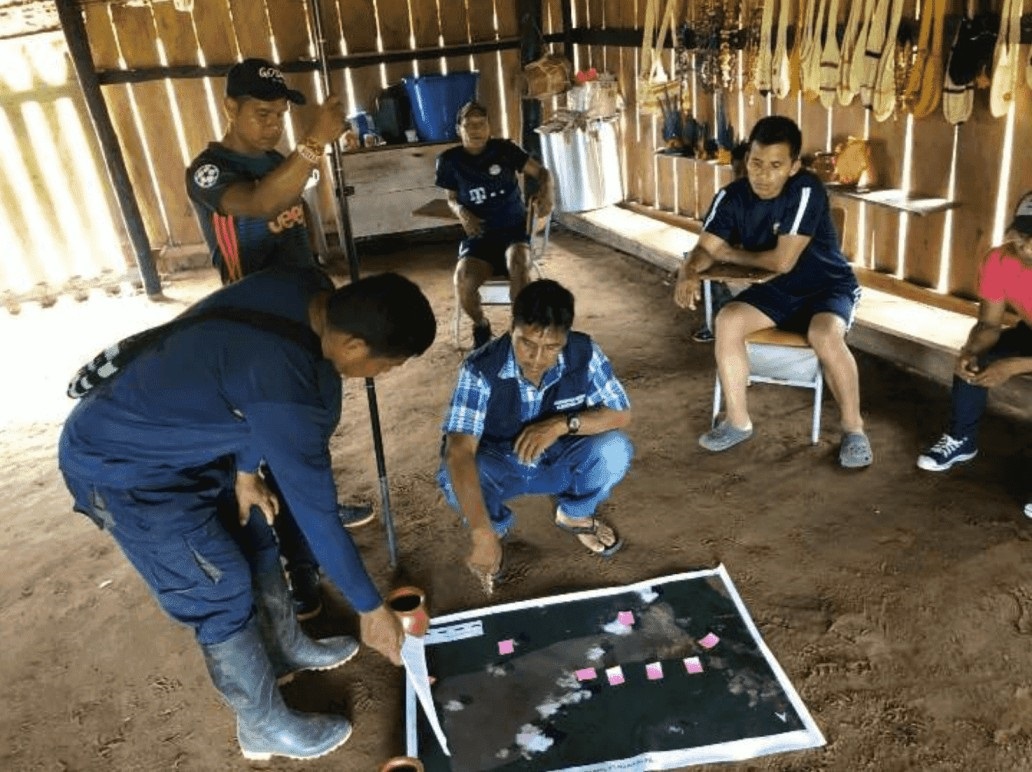As part of a scoping study titled Land Governance for Climate Resilience: A review and case studies from LAND-at-scale projects headed by Richard Sliuzas, Emeritus Professor, University of Twente, Tropenbos Colombia dove into the links between climate and land governance in their project.
Context
Solano is a municipality located in the department of Caquetá within the deforestation arc of the Colombian Amazon. In terms of its area, it is the second largest municipality in Colombia. Solano has an area of 4.2 million hectares, of which about 2 million hectares belong to the Chiribiquete Park; 700,000 hectares are indigenous reserve lands; 200,000 hectares are protected areas by environmental determinants such as wetlands, water reserves, which are untouchable according to new regulations; 1.3 million hectares is a forest reserve area that is not subject to titling to private individuals; and only 3% of the area is excluded from the forest reserve.
The indigenous reserve lands (resguardo), are protected by a collective form of property which provides great security as it is inalienable, unseizable and imprescriptible. This situation is a great advantage to indigenous peoples over peasants, especially in this context where most of the land cannot be awarded to private individuals. Most deforestation is occurring in the Chiribiquete Park and forest reserve areas, where indigenous reserves are far better conserved than areas occupied by peasants.
Deforestation has broad impacts on the Amazon climate, with variations in temperature and hydrometeorology, impacts on ecosystems with loss of biodiversity, changes in precipitation, occurrence of extreme events, extension of dry periods, changes in aquatic ecosystems with alterations in fish populations and, most significantly, the possible occurrence of the tipping point that would turn the Amazon rainforest into savannah.
LAND-at-scale in Colombia
The LAND-at-scale project in Colombia has the objective of contributing to security of tenure and sustainable economic development. In Solano, work is being carried out by Kadaster International, Tropenbos and ICCO Conexión together with the Teofila La Arenosa Resguardo, where the Koreguaje and Makaguaje indigenous peoples live. The goal of the collaboration is two-fold: first, to rectify the resguardo’s boundaries within the context of the request for an extension and for a new resguardo in the framework of land restitution due to the armed conflict. Second, to strengthen the extraction and commercialisation of oil from the milpeso palm (Oenocarpus bataua) by developing a management plan for this extraction and the restoration of some degraded areas. It is important to establish the correct boundaries so that the management plan does not create conflicts with the neighbouring peasants. The collaboration has also facilitated the participation of representatives of this resguardo to participate in municipal spaces for the formulation of a plan to stop deforestation and the updating of the land-use planning scheme.
Participatory land governance for increased climate resilience
Local people are a fundamental ally in monitoring changes and are essential for understanding climatic changes and for developing proposals for action to mitigate the effects of climate change and adapting the territory to them. For the local inhabitants, for example, the reduction of forest resources, the misalignment of the months in which winter should arrive or summer end, the appearance of new diseases or the difficulty for crops to survive, water scarcity in summer, and erosion due to excess rainfall in the rainy season are frequent situations that can be observed and analysed in their daily lives. In addition, the local people's knowledge about the management of the territory and its resources allows for an intricate understanding of the relationship between human actions, climate variations and environmental deterioration. Local people attribute the change in climate to deforestation, cattle ranching, mining, and the use of agrochemicals and propose a set of actions to adapt and mitigate locally the effects of climate change
These perceptions of local people have been formulated into a citizens' agenda for adaptation to climate change, which also include a set of actions to be implemented at the local level. This agenda includes the following actions, among others: restoration of degraded areas, care and restoration of water sources, cultural and spiritual strengthening for the good management of the territory, strengthening of traditional crops for food security, environmental education and climate monitoring. It also proposes a broad citizen participation in decision-making about the territory including environmental zoning, to the point of recognizing the communities as environmental authorities. This agenda has been discussed and presented in scenarios with the local government, that is the municipality of Solano in the context of the formulation of a plan to stop deforestation and the updating of the land-use planning scheme.
Main take-aways
To truly understand the impacts of climate change, the diagnosis of its effects must be participatory with local people. This also allows people to formulate their own alternatives for adaptation (resilience) based on the implementation of good productive practices and forest management. These alternatives must be assumed at different levels (the community level but also at the municipal level) and need to be considered in forest and land governance. The situation of Solano shows the importance of secure land tenure to improve land governance and climate resilience practices like participatory productive restoration, which can become an alternative for land tenure and long-term governance.
Want to know more? Get in contact via landatscale@rvo.nl
Or compare the findings with our cases in Mozambique, Somalia, and Uganda.
Written by Maria Clara van der Hammen & Carlos Roderiquez
Edited by Aoife Ossendorp

